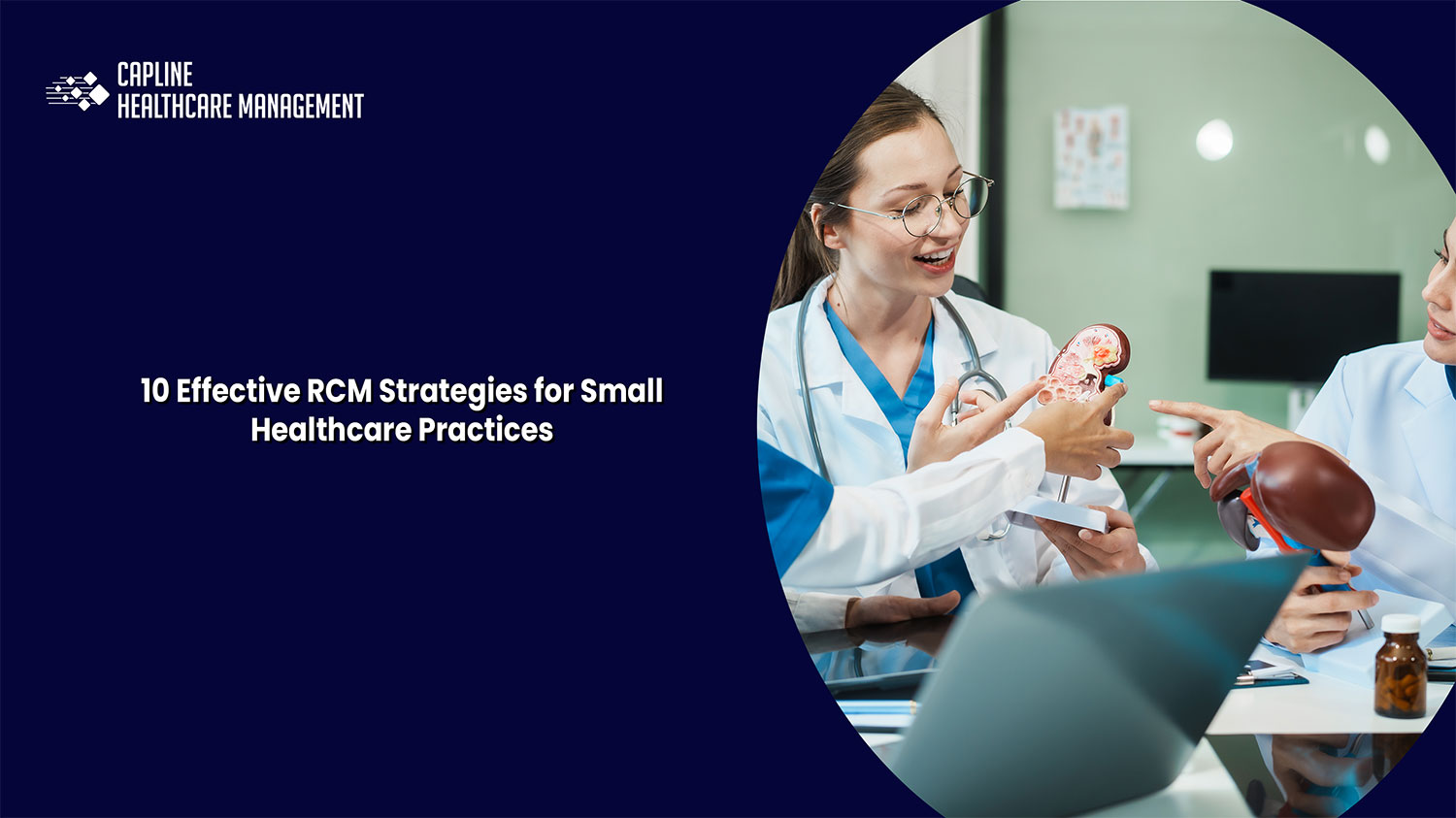10 Effective RCM Strategies for Small Healthcare Practices
Operating a small healthcare facility demands substantial continuous effort. Medical professionals maintain a permanent balance between delivering patient care and ensuring operational stability. The secret weapon that brings success to your practice is Revenue Cycle Management (RCM).
Just think about the ability to run a financial system that will allow you to focus on care instead of administrative headaches. Effective RCM strategies are exactly what you can implement in your practice. In this complete guide, we have you covered with 10 strategies that can completely change your medical billing game and help you with managing healthcare revenue.
Understanding the Importance of RCM Strategies
Healthcare exists beyond medical care to ensure the financial stability of organizations. A well-executed medical billing system, along with effective revenue management, determines whether a practice will succeed or barely survive. The following section details specific methods small healthcare practices should use to enhance their financial outcomes.
1. Implement a Robust Patient Registration Process
The foundation of successful revenue cycle management begins with accurate patient information. Develop a comprehensive patient registration system that:
- Collects complete demographic and insurance information
- Verifies insurance eligibility in real-time
- Captures accurate patient contact details
- Implements digital intake forms to reduce errors
2. Master the Art of Claim Denials Prevention
Your practice’s resources will disappear quickly when claim denials occur during medical billing procedures. Your strategy should include:
- The practice should provide ongoing training to staff members about coding accuracy.
- Implementing advanced claim scrubbing technology
- A specialized team should handle both claim review and appeal functions.
- Your organization should study denial patterns to stop future problems from occurring.
3. Streamline Payment Processing Workflows
Patients expect easy access to services and complete transparency; your payment processing should empower them.
- Patients should be offered payment options, including online & mobile, and in-office.
- Healthcare organizations ought to have open communication channels to explain a patient’s financial responsibility.
- Use an automated payment reminder system.
- Your organization should have specified pricing and payment plan options.
4. Capitalize on Technology For Healthcare Revenue Cycle Management
There are great benefits of organizations obtaining sophisticated Revenue Cycle Management technology, which:
- Healthcare organizations should connect their EHR system to their billing platform. Provide real-time analytics and reporting.
- Automate repetitive admin work.
5. Develop a Comprehensive Staff Training Program
Your team functions as the most valuable resource for medical billing operations. Your organization needs to establish a learning environment that:
- The organization maintains a system for distributing current information about billing regulations.
- Offers certification and skill enhancement opportunities
- The system enables staff members to learn multiple billing operations.
- The organization develops an environment that values precision and ongoing enhancement activities.
6. Implement Regular Financial Audits
Regular financial assessments help organizations detect revenue loss opportunities.
- Conduct monthly financial performance reviews
- Track key performance indicators (KPIs)
- Identify and address billing inefficiencies
- Develop strategies for continuous improvement
7. Create Patient-Centric Financial Experiences
Healthcare organizations should transform their payment processing systems through an emphasis on patient financial experiences.
- Provide clear, understandable billing statements
- Offer flexible payment options
- Organizations should establish effective communication methods to explain financial obligations to patients.
- Technology solutions should be used to make billing processes easier for patients.
8. Develop a Proactive Claim Denials Management Strategy
Organizations should transform claim denials into beneficial opportunities:
- Establish a specialized team to handle claims follow-up activities
- Develop a systematic appeal process
- Organizations should examine denial patterns to stop future problems from occurring.
- Implement continuous improvement mechanisms
9. Embrace Data-Driven Decision Making
Drive strategic decisions from healthcare revenue data:
- Implement advanced analytics tools
- Track comprehensive financial metrics
- Use predictive modeling to forecast revenue
- Make informed decisions based on concrete data
10. Partner with Revenue Cycle Management Experts
Consider external support to enhance your financial strategies:
- Consult with RCM specialists
- Attend industry workshops and training
- Stay updated on healthcare financial regulations
- Network with other healthcare financial professionals
Your Road to Financial Success
The implementation of these RCM strategies requires patient dedication because they do not lead to immediate results. Continuous development accompanies this path together with learning and adjusting to new opportunities. By dedicating themselves to strong Revenue Cycle Management practices, small healthcare practices establish a lasting financial system that enables superior patient care.
Frequently Answer Questions
How Often Should We Review Our RCM Strategies?
A quarterly review of RCM strategies requires financial metric analysis alongside improvement area identification and technology and process effectiveness assessment, and current billing regulation compliance verification.
How Can Small Practices Afford Advanced Payment Technologies?
Budget constraints are a concern, but affordable options exist. Cloud-based, scalable systems, modular upgrades, and subscription-based technologies offer cost-effective solutions. Prioritizing tools with clear ROI makes advanced technology accessible to small practices.
What Methods Exist to Evaluate RCM Success?
The success metrics for RCM include monitoring Days in Accounts Receivable (DAR) alongside clean claim rate, collection rate, denial rate, and net collection percentage. The results of routine assessments show how well your RCM operates and reveal which aspects need improvement.
What’s the Biggest Challenge in Medical Billing?
Denials of Claims; they arise from inaccurate patient data and coding errors, incomplete documentation, and obsolete verifications of insurance. Proactive RCM methods are meant to avert these issues and thereby stem revenue loss.
Conclusion
Such RCM strategies need long-term dedication from staff members who must consistently learn new techniques while focusing on patient needs. A comprehensive investment in revenue cycle management systems by small healthcare practices will build their financial strength to deliver superior quality patient care.
The core objective of Revenue Cycle Management surpasses payment collection since it establishes a long-lasting healthcare system that unites financial stability with outstanding patient interactions.



